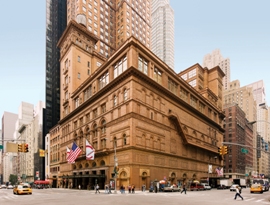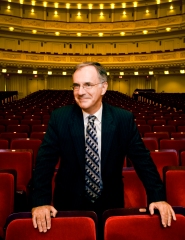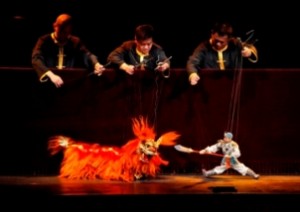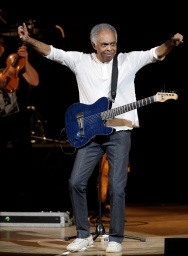Carnegie Hall, New York, NY
Taking Audiences on Journeys of Discovery – Creating Cross Discipline Partnerships to Enrich Engagement
One of the most frequently asked questions Rory and I hear from arts marketers is “How can we attract audiences that are totally new to our organization?” It seems to us that organizations have gotten better at drawing current audiences – the “low hanging fruit” – back to attend additional events but brand new patrons are elusive. Some of the most exciting approaches we’ve seen are Carnegie Hall’s annual festivals– once a year citywide cultural feasts which bring together a range of performances and events at dozens of partner organizations throughout New York City around a compelling theme. The festivals – now in their seventh year – are working to energize current audiences and attract brand new audiences to the most traditional of settings.
Imagining a New Artistic Paradigm:
In 2005 when Clive Gillinson left the London Symphony to head Carnegie Hall, he brought a collaborative temperament and a fascination with the possibilities New York City’s cultural colleagues could offer. He began to imagine what could be achieved by taking a holistic view of the city’s artistic opportunities surrounding arts and culture. His goal was to build on Carnegie Hall’s 122 year tradition of presenting great musicians from around the world by providing a broader context for audiences -curating compelling journeys of discovery by providing rich cultural content around the music. He sought to present performance in a new way, using the artistic assets of NYC’s cultural community to enrich audience experiences, inspire artists, unlock the creativity of his staff and ignite the imaginations of the city’s cultural communities and citizens.
Placing music at the core of the festival, the cross departmental Carnegie Hall team began with the planned 2007 residency of the Berlin Philharmonic and explored the possibilities of placing the scheduled performances in a broader context of Berlin’s robust arts and culture scene. The team expanded the performing lens to look at Berlin as a cultural incubator, and decided to recreate its dynamic arts scene for New Yorkers and visitors with the first Carnegie Hall citywide festival. Carnegie Hall – acting as an artistic catalyst and engagement impresario – reached out to visual arts, cultural, community, literary, film and even other presenting organizations, to make Berlin come alive with events occurring all over town for 3 weeks in 2007.
 Mr. Gillinson explains the revolutionary concept: “In fall 2007, we added a new dimension to Carnegie Hall’s programming mix with our first citywide festival, Berlin in Lights, a three-week celebration exploring the vibrant arts scene of the German cultural capital with more than 50 events at Carnegie Hall and leading arts organizations throughout New York City.”
Mr. Gillinson explains the revolutionary concept: “In fall 2007, we added a new dimension to Carnegie Hall’s programming mix with our first citywide festival, Berlin in Lights, a three-week celebration exploring the vibrant arts scene of the German cultural capital with more than 50 events at Carnegie Hall and leading arts organizations throughout New York City.”
“At the time, Carnegie Hall had long been known for presenting incredible performances by the world’s finest artists of all musical genres as well as some shorter series. With Berlin in Lights and the other major festivals that we’ve since offered annually each season, our goal has been to build on this tradition to develop larger journeys of discovery for audiences. We’ve worked with the many wonderful partner organizations throughout the city to create extensive specially-curated series of events that explore compelling themes, spanning all aspects of arts and culture,” said Mr. Gillinson.
Berlin in Lights created a Renaissance of collegiality and collaboration in New York City and was the first in a series of annual festivals, bringing audiences, organizations and artists together around cross cutting themes. Carnegie Hall will launch its 7th festival in Winter 2014, focusing on VIENNA: City of Dreams in collaboration with the Austrian Cultural Forum New York, the Frick Collection, The Morgan Library, the Museum of Modern Art, The Paley Center for Media, The Julliard School, Neue Galerie and Le Poisson Rouge, among other leading NYC institutions.
Objectives/Results:
The overall audience development goals of the festival programming at Carnegie Hall are to draw its traditional subscription and single ticket audiences to new experiences and to attract new audiences to Carnegie Hall’s programming.
The programming of music as part of a larger artistic journey also serves to create a mobilizing “event” to draw media attention and focus staff and partner energies around something bigger than just another concert or series of concerts. “We want our current subscribers to be surprised and intrigued,” stated Naomi Grabel, Carnegie Hall’s Director of Marketing, “and to create a compelling reason for new audiences to give us a try.”
And it works!! In a time where we’re hearing that subscriptions are dying and audiences are turning away from traditional art forms – especially classical music – Carnegie Hall reports than more than one third of audiences who buy a ticket to a festival performance are NEW to the organization. And even more tellingly, 10-15% of attendees who came to Carnegie Hall for a festival, return to hear/see something else during the rest of the year.
“It gives us a way to penetrate the busy lives of over scheduled New Yorkers and visitors by creating a focused cultural journey which engages a variety of artistic appetites,” stated Synneve Carlino, Director of Public Relations. “And it inspires our staff to work together across departments to creatively market and promote our festivals.” In recent summers, Carnegie Hall has tried new ways to spread the word about its festivals to targeted audiences, for example, launching street teams at summer festivals to reach Latino New Yorkers in advance of 2012’s Voices from Latin America festival and traveling to the annual Dragon Boat Festival in Flushing, Queens to promote its China themed festival in 2009. ”We want to engage with people who may not be aware of Carnegie Hall and tell them about a range of programming that they might enjoy.”
A Frame Not a Formula – Making it work:
The realities of making collaboration work call for imagination, flexibility and sensitivity throughout planning and execution. As Naomi Grabel says: “We don’t take a cookie cutter approach, each festival is unique and calls for fresh thinking about design, collaboration and promotion.”
Some of the key ingredients to success include:
- Advance planning – speaking with major partners 2-3 years in advance about important artistic programming initiatives at Carnegie Hall – such as building on the 2014 planned seven performance schedule of the Vienna Philharmonic to create the Vienna: City of Dreams festival.
- Working with leading artists to build programming around themes such as Jessye Norman who imagined the 2009 Honor! A Celebration of the African American Cultural Legacy festival and Carnegie Hall Debs composer chair, Osvaldo Golijov, an artist who provided key advice for the Voices from Latin America festival in Fall 2012.
- Responding to milestones of mutual interest to partners such as the joint celebration, with the New York Philharmonic, of the 90th anniversary of Leonard Bernstein’s birth and the 50th anniversary of his appointment as the Philharmonic’s music director with Bernstein: The Best of All Possible Worlds in Fall 2008.
- Being sensitive to partners’ unique personalities by encouraging them to present a wide range of offerings within the festival theme.
- Keeping collaborations simple by letting each partner take responsibility for ticketing, fulfillment and individual promotion for their own performances.
- Building promotional assets useful to all partners and accessible to all audiences, including a micro web site, sharable signage, background video, ads, brochures, etc.
- Connecting all internal resources – creating a cross-departmental Carnegie Hall team for each festival with artistic, marketing, development, ticketing and education staffers on board.
- Respecting and celebrating the culture highlighted – approaching target constituencies such as the Latino audience for the Voices from Latin America festival or the Chinese-American community for the Ancient Paths, Modern Voices: A festival Celebrating Chinese Culture (Fall 2009) with appropriate media outreach, bilingual materials and timing.
And the result is a series of annual events that create a cultural feast for New Yorkers and visitors. As Mr. Gillinson says, “We hope that Carnegie Hall festivals will tempt audience members to go beyond single performances or the offerings that they already know and love. We want to inspire them to try new things, exploring interesting themes, painted across a wide cultural canvas.”
Tell us about your best/worst social media experience...
…and meet digital communications pioneers.
Click on our profile template to get started.
Want to get in touch?
We’d love to hear from you. Contact us.